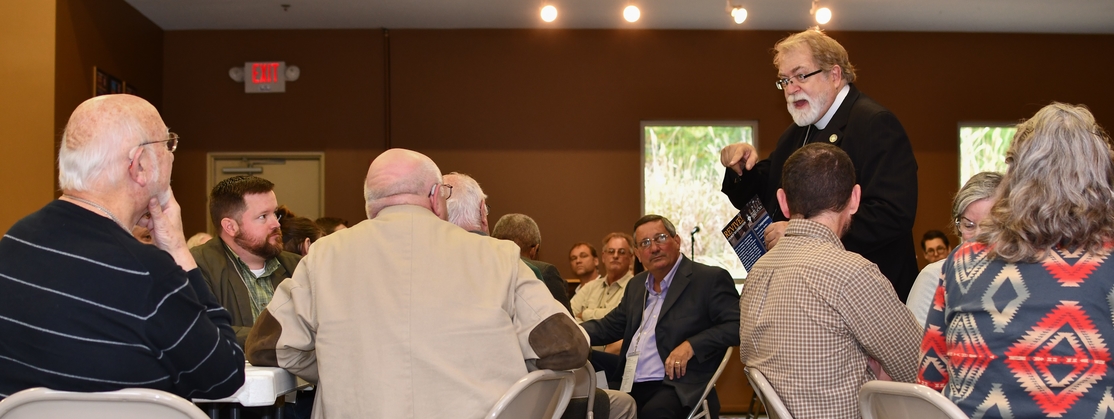 While many ADOTS churches are thriving and growing, some are experiencing decline and struggling with growth. Canon Phil Ashey offers some wisdom on revitalization to parish lay leaders.
While many ADOTS churches are thriving and growing, some are experiencing decline and struggling with growth. Canon Phil Ashey offers some wisdom on revitalization to parish lay leaders.
Canon Phil is a priest-attorney, and President & CEO of the American Anglican Council: a mission society dedicated to the revitalization of Anglican churches and development of faithful leaders. He says it’s essential to speak to the smaller, aging congregations about the hard work of introspection, and that the “If-Then” paradigm of thinking most prevalent in the church is faulty for sparking growth.
“‘If we as a church get healthy, if we have some more young families, if we have more people tithing, if we have a beautiful worship space… then we will be able to do the Great Commission.’ We want to turn that on its head: We want to say to you that when you renew your commitment to do what Jesus said in Matthew 28… then you will get healthy,” says Canon Phil.
Since 2011, the AAC has been working with various methods for church revitalization, and Canon Phil shared with ADOTS lay leaders some of the lessons the organization has learned.
No Revitalization without Renewal
Canon Phil says renewal on personal, relational, and missional levels is necessary in order to engage those already attending and to invite others in.
“You actually face people with a choice that Christ is paramount. If you have broken relationships and conflict – and the air of that is in the atmosphere – people will not come back.”
A Core Conviction for the Great Commission
“It can’t simply be a good idea among other good ideas. It must be done; you have to find a way to do it. It’s not rocket science; this is just opening your heart to people.”
He says this is as simple as mentoring and sharing the gospel of Jesus to those around you.
A Clear, Specific, Doable Vision
Canon Phil references Acts 2:42-47 and Jeremiah 29 as just two visions of what the church can be.
“Of all these Biblical pictures that we have for the vision of our Church, how does God want to express himself through my church, in my community, at this time? That means it’s unique – it is a word for your church and not for another church. That vision drives everything that you do; it has to be specific.”
Focus on Church Health, not Church Growth
He says churches have to look at themselves with new eyes, to ask what they’re doing that is comfortable for them, but may be unhelpful for outsiders.
“Every family has a system, and sometimes these systems are unhealthy. So we have to look at the church as a system, and church culture as something that can potentially be a real barrier to people coming to know Jesus.”
There is no Revitalization without Pain
Change is difficult, and difficulty will naturally spawn relational conflicts within a church.
“It’s costly… Because this process will cause you to look at your culture, to look at what you’re doing, and it will require you to make some changes. And change always means loss. And loss is pain.”
The AAC offers its ReVive! Workshop for churches of any size, but also believes months of coaching are essential to walk with churches through the pain inherent in the revitalization process.
“It’s a wonderful journey that I invite you to go on,” says Canon Phil. “If you get these things right, if you lay these foundations, your church will grow.”
For more from the America Anglican Council:
Sign up for AAC weekly emails
Check out helpful articles and info on Church Revitalization

by Rachel Moorman
Communications Associate
news@adots.org
